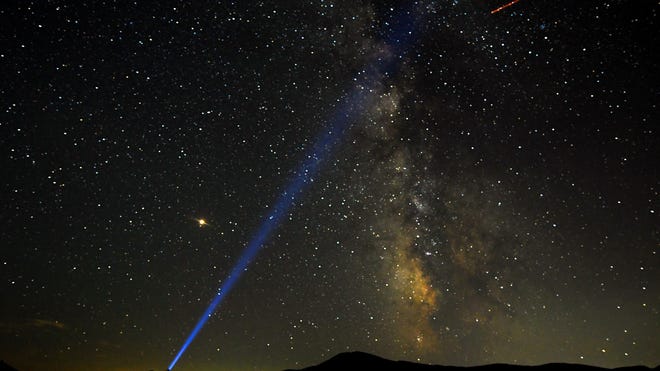Every summer, the Earth passes through a cloud of space debris that brings a meteor shower, and this summer is no different.
The Perseid Meteor Shower comes around in mid-summer every year is back again until the end of August. The comet, which the debris that forms Persides comes from, last visited the Earth’s atmosphere in 1992, but we still get to observe the cloud of dust and pebbles left in its wake each summer. And it is usually one of the most plentiful celestial light shows that we get to witness on Earth.
Here’s everything to know about the meteor show and when the best time to catch it is.
When does the Perseid Meteor Shower take place?
The shower is typically active from mid-July to the end of August. This year, the show takes place from Sunday, July 14 to Sunday, Sept. 1.
Why is it called Perseids?
The Perseids are debris caused by the Earth passing through debris left behind by the comet Swift-Tuttle which last passed close to Earth in 1992. They are named the Perseids as they come from the direction of the constellation Perseus.
Most of the Perseids are tiny and close in size to a grain of sand. They can reach temperatures of more than 3,000 degrees Fahrenheit. Typically, a Perseid meteoroid moves at 133,200 miles per hour when it hits Earth’s atmosphere.
Most fragments of debris are visible when they are about 60 miles from the ground.
What time is best to watch the Perseid Meteor Shower?
The official peak of the shower will be on Aug. 12 and overnight into Aug. 13. The moon will be 50% full that evening, but it is expected to set at about midnight. The best time to view the shower will be after the moon sets and before the sun comes up.
Best ways to view the Perseid Meteor Shower
The meteors are going to be most visible overnight. The shower is taking place to the north, so make sure to face that you don’t face the wrong direction.
According to NASA, you can expect to see an average of 100 meteors per hour during the peak. NASA also recommends viewing in the pre-dawn hours.
Binoculars or a telescope are not necessary to see the meteor shower. All you need is a location away from any light pollution. Give your eyes about 30 minutes to adjust to the darkness; the meteors should be visible. Thankfully for stargazers, Tennessee has several places that are a short drive away where people can go view the sky with little light pollution.


